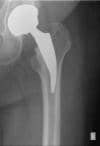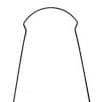Moving Forward in Three Dimensions

OP: How do you think 3-D technology improves the quality of orthodontic care?
de Silva: Traditional orthodontic tools such as cephalometric analysis don’t provide enough information to plan the patient’s treatment objectives in detail—they help determine strategy, but not the precise target.
By using 3-D tools, the orthodontist can plan the precise position for each tooth by detailing the tooth-to-tooth relationships on the computer setup. The biggest advantage, however, comes when you can use the 3-D plan to design custom appliances that result in smarter tooth movement.
OP: What is the SureSmile system, and what does it do for orthodontists?
de Silva: SureSmile combines intraoral 3-D imaging, software tools for diagnosis and treatment simulation, and robotic archwire customization of shape memory alloy archwires.
By taking the 3-D target developed by the orthodontist and using it to drive a robotic process that precisely bends archwires, orthodontists can place directionally correct force on every tooth as soon as their wire is engaged in the patient’s mouth. By moving each tooth along the most direct path to its target, the orthodontist and patient benefit from reduced treatment time, treatment visits, and wire changes.
OP: What do you see your company doing for the industry 5 years from now?
de Silva: 3-D technology is poised to make significant changes to the entire orthodontic-care paradigm. Access to 3-D images of the patient’s entire head and not just the dentition will provide orthodontists with unprecedented diagnostic and treatment-planning information.
With this data in hand, orthodontists will be able to offer patients a new standard of care that delivers higher-quality results than they were able to achieve by sight and hand alone.










